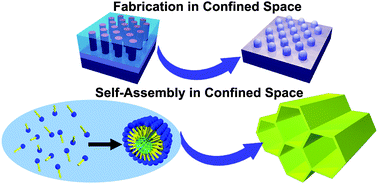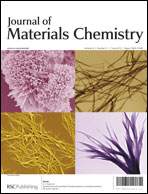Molecular assemblies have been mainly researched in open spaces for a long time. However, recent research has revealed that there are many interesting aspects present regarding self-assemblies in confined spaces. Molecular association within nanospaces such as mesoporous materials provides unusual phenomena based on highly restricted molecular motions. Current research endeavors in materials science and technology are focused on developing either a new class of materials or materials with novel/multiple functionalities which is often achieved via molecular assembly in confined spaces. Template synthesis and guided assemblies are distinguishable examples for molecular assembly in confined spaces. So far, different aspects of molecular confinements are discussed separately. In this review, the focus is specifically to bring some potential developments in various aspects of confined spaces for molecular self-assembly under one roof. We arrange the sections in this review based on the nature of the confinements, accordingly the topological/geometrical confinements, chemical and biological confinements, and confinements within thin films. Following these sections, molecular confinements for practical applications are shortly described in order to show connections of these scientific aspects with possible practical uses. One of the most important facts is that the self-assembly in confined spaces stands at meeting points of top-down and bottom-up fabrications, which would be an ultimate key to push the limits of nanotechnology and nanoscience.

You have access to this article
 Please wait while we load your content...
Something went wrong. Try again?
Please wait while we load your content...
Something went wrong. Try again?


 Please wait while we load your content...
Please wait while we load your content...